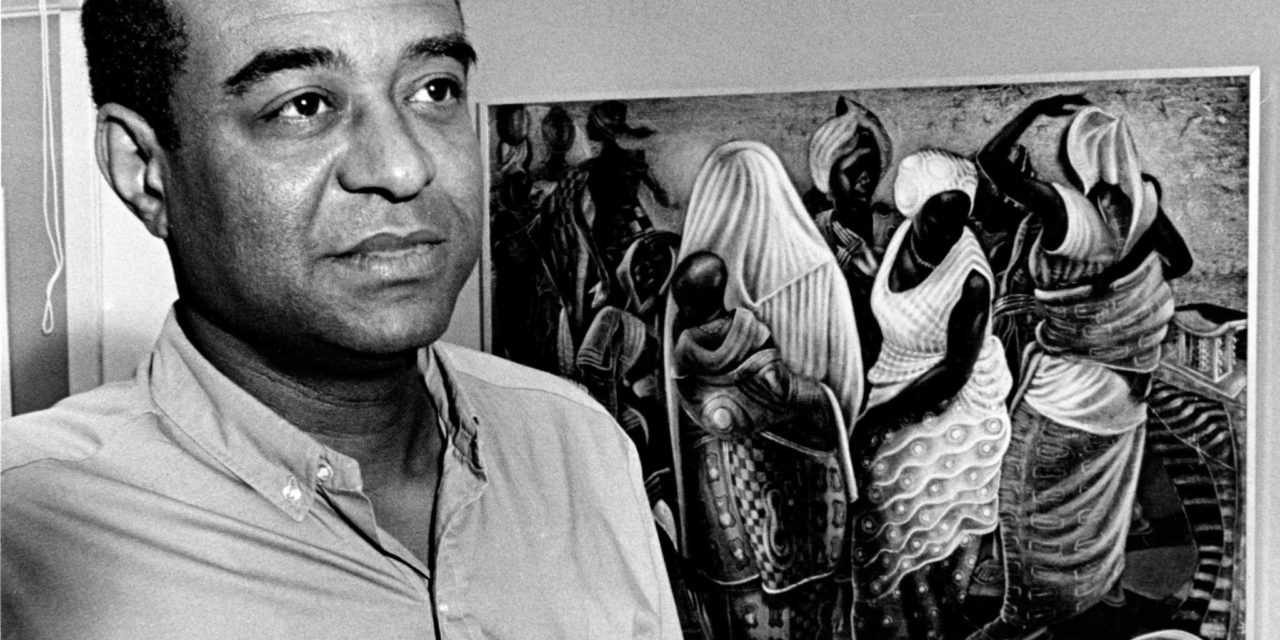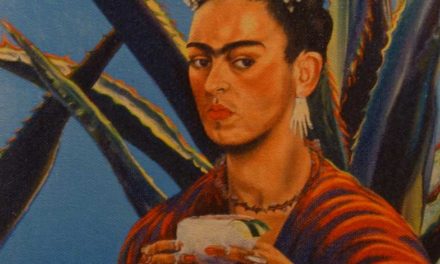John Thomas Biggers (April 13, 1924 – January 25, 2001) was an African-American muralist who came to prominence after the Harlem Renaissance and toward the end of World War II.
He was born in a shotgun house built by his father in Gastonia, North Carolina. His father Paul was a Baptist preacher, farmer, shoemaker, schoolteacher, and principal of a three-room school. His mother Cora was a housekeeper for white families. The youngest of seven, Biggers was reared in a close family that valued creativity and education. When Cora’s husband died in 1937, she took a job in an orphanage for Black children, and John and his brother Joe were sent to Lincoln Academy, an American Missionary Association school in Kings Mountain, North Carolina.
After graduating from Lincoln, Biggers attended Hampton Institute (now Hampton University). Biggers planned to become a plumber (his Hampton application included boiler room drawings), but his life took a dramatic change of course when he took an art class with Viktor Lowenfeld, a Jewish refugee who in 1939 fled from Nazi persecution in Austria before World War II. Lowenfield exposed his students to works by African Americans and was concerned with altering his students’ perceptions toward their African heritage by introducing them to the religious and social context of African art, of which the Hampton Museum had a significant collection.
Afterward, Biggers began to study art. At Hampton, Biggers also studied under African-American painter Charles White and sculptor Elizabeth Catlett. There he was introduced to Mexican muralists Jose Clemente Orozco, David Alfaro Siqueiros, and Diego Rivera and American regionalists Grant Wood, Reginald Marsh, Thomas Hart Benton, and Harry Sternberg. He was exposed to and influenced by the Harlem Renaissance artists William Artis and Hale Woodruf, and writers W. E. B. Du Bois and Alain Locke.
In 1943, he was drafted and joined the U.S. Navy, which was at the time segregated. He remained stationed at the Hampton Institute and made models of military equipment for training purposes. In that same year, his talents were recognized when his work was included in a landmark exhibit Young Negro Art at the Museum of Modern Art in New York. Biggers was discharged in 1945.
He has worked on creating works critical of racial and economic injustice. He served as the founding chairman of the art department at Houston’s Texas State University for Negroes (now Texas Southern University).
He studied African myths and legends and was particularly drawn to the creation stories of a matriarchal deistic system, contrasting with the patriarchal images of the European world. As his ideas and images of Africa melded into the memories of his rural Southern life, his work became more geometric, stylized and symbolic. Quilt-like geometric patterning became a unifying element of his work and color became richer and lighter. However, it is critical to note that over the years, Biggers moved from creating works that were overtly critical of racial and economic injustice to more allegorical work
About the Cover Art
An ancient African children’s story about the never-ending chase between a rabbit and turtle inspired John Biggers’, Salt Marsh. His display of African culture and the emphasis on children being our future is a common theme not only in his work but also in his actions, as he was the founding chairman of the art department at Texas Southern University. Initially focusing on educating African-American students, the university’s visual arts program stands out as an educational environment stressing how cultural awareness can positively impact the community. Biggers’ impact on African American education and art set the stage for other African American artists to pursue their dreams. He has had multiple pieces in groundbreaking shows such as the landmark exhibit Young Negro Art at the Museum of Modern Art in New York. In 1995 Museum of Fine Arts Houston hosted a retrospective exhibition of Biggers’ works The Art of John Biggers: View from the Upper Room. These exhibitions and more showed Biggers’ role as an elder in the African American community and helped pave the way for other artists like him. His Salt Marsh piece represents the birthplace of Houston and its self-sustaining force. On this mural, the artist is quoted as saying: “Through the rebirth of our children’s understanding of themselves as a part of nature, the bayou will once again be a great force. As our children discover self-awareness, we also find a mirror image for all of us. They are all salvation and our hope for tomorrow.” James McNeil, Harvey Johnson, and University of Houston students Susan Davidson, Tiziano Hernandez, and Mujeet Rahman assisted Biggers on this large-format work.
John Biggers










